Amélie is a poetic French movie released in 2001, directed by Jean-Pierre Jeunet
« Le Fabuleux Destin d’Amélie Poulain », which is set in the district of Montmartre, is a poetic depiction of contemporary Parisian life
It tells the story of a shy waitress, played by Audrey Tautou, who decides to change the lives of the people around her for the better, while struggling with her own isolation. The film is to date the most popular French-language film released in the United States, and one of the biggest international successes for a foreign movie.
The popular French movie Amélie (in French « Le Fabuleux Destin d’Amélie Poulain ») is mainly set in Montmartre, which is part the 18th arrondissement of Paris. Not so much in the most touristy neighborhood around the Place du Tertre, but rather in the more peaceful western part of the district.
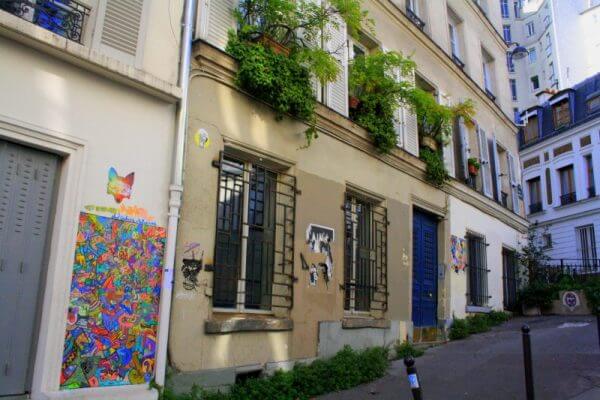
With a group of photographers, we got the idea of taking a stroll in Montmartre along the locations where the film was set and was actually shot. As a matter of fact, film director Jeunet’s picture of Montmartre is idealized, but the actual locations of the movie Amélie – in French « Le Fabuleux Destin d’Amélie Poulain » – were real.
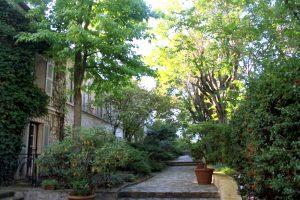
Going up rue Lepic, you will recognize some of the local shops, fruit and vegetables shops that Amélie described to a blind person. You will in particular recognize the Café des Deux Moulins where Amélie was a waitress.
The poster for the film is well displayed inside and although the tobacconist’s is no longer there, the bar still has the zinc counter of an authentic Parisian bistro. If you are a fan of the film, treat yourself to a crème brûlée and break the sugary crust with the end of a teaspoon …

A second not to be missed venue is the grocer’s store Maison Collignon: it took its name from the film. It still sells fruit, vegetables and other foodstuffs, as well as a few souvenirs of Amélie – postcards and posters.
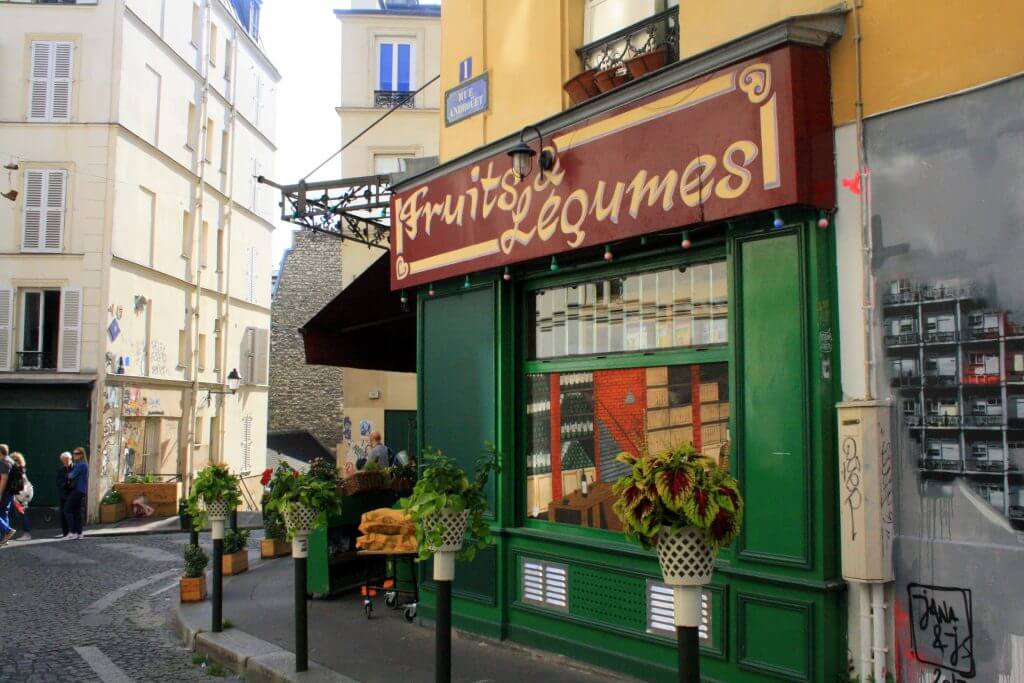
If you’re in the area, you’re only a few steps from Le Moulin de la Galette, which is a restaurant in an old windmill
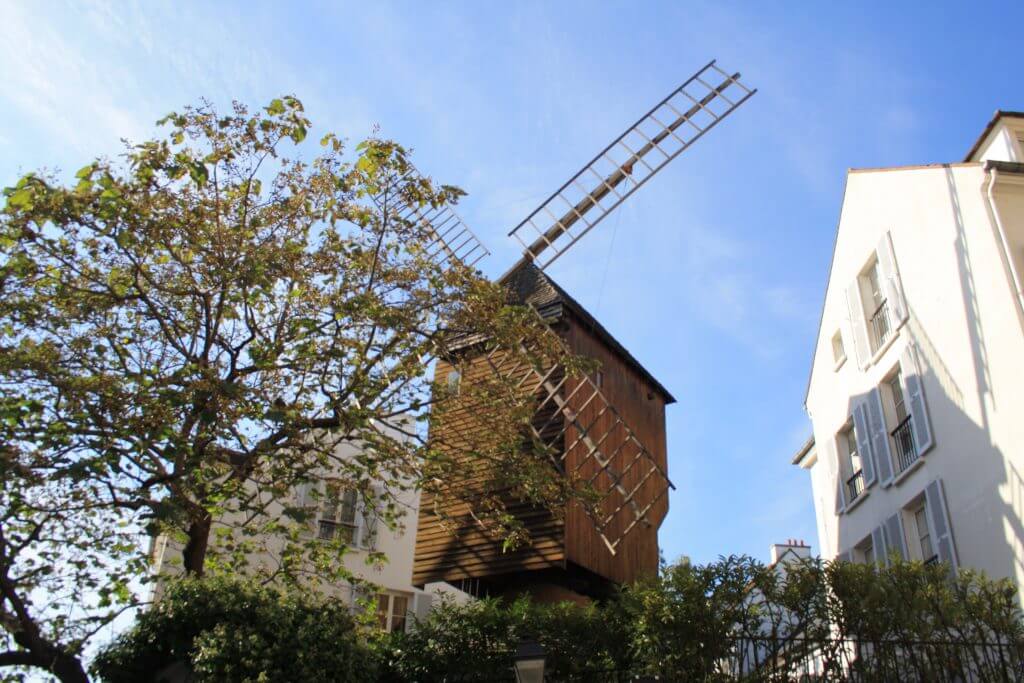
While walking the streets of Montmartre, you might be lucky enough to encounter a sculpture called Le Passe-Muraille (the Passer-Through-Walls). Le Passe-Muraille is the title of a story by Marcel Aymé about a man named Dutilleul who discovers that he can walk through walls.
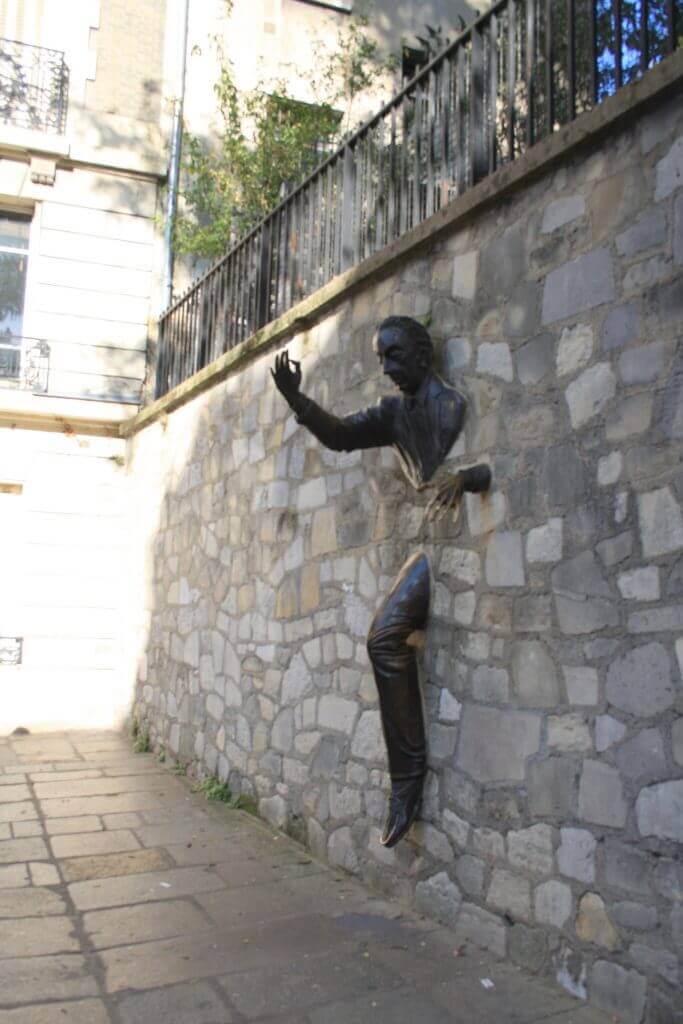
And now to the little public garden with its old-fashioned merry-go-round, below Sacré-Cœur basilica. To get to the top of the butte (hill), take the flight of steps that line the lawns … or the funicular.
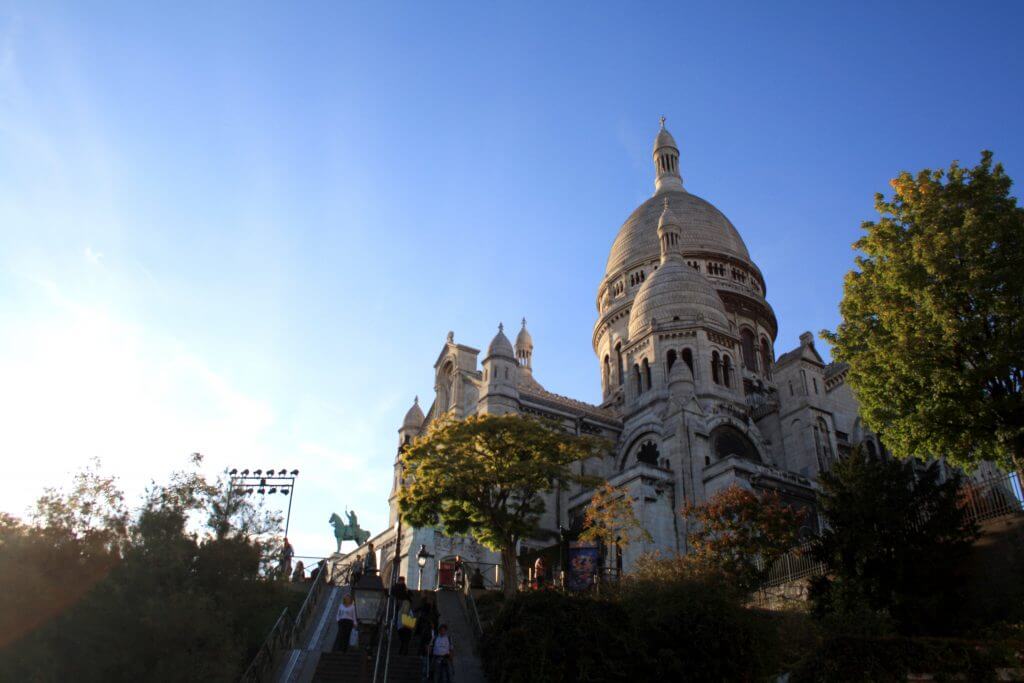
On arriving at the heart of the village of Montmartre, leave behind the Place du Tertre and its busy environment, to find Amélie Poulain on Rue Saint-Vincent, bordering Montmartre vineyards.
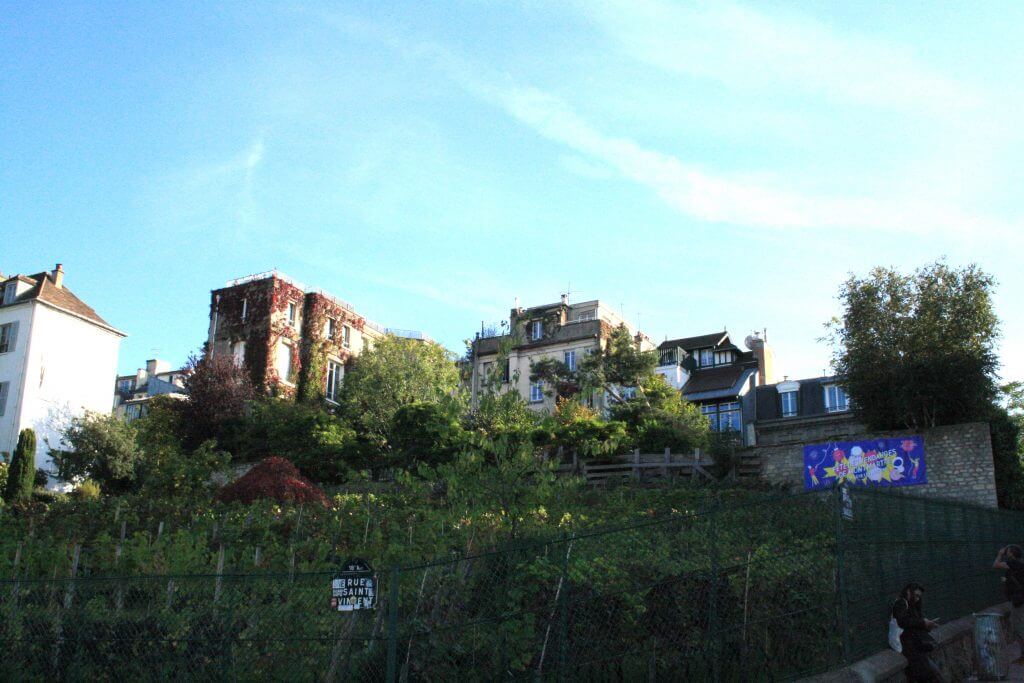
Then take the Allée des Brouillards, among the little squares, little streets, little gardens, and fairy-tale houses among which she liked to dream … The metro Lamarck-Caulaincourt is just a few flights of steps away and, this time, it is Amélie’s station.
Have you seen the French movie « Amélie » (« Le Fabuleux Destin d’Amélie Poulain »)? What did you think of the film?
Interested in knowing more about French cinema and culture? Contact Caroline to try her French Language Classes in Paris.


